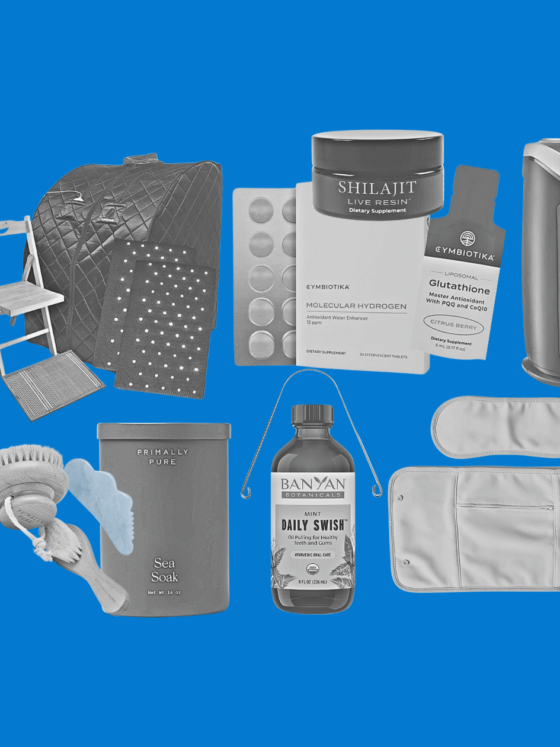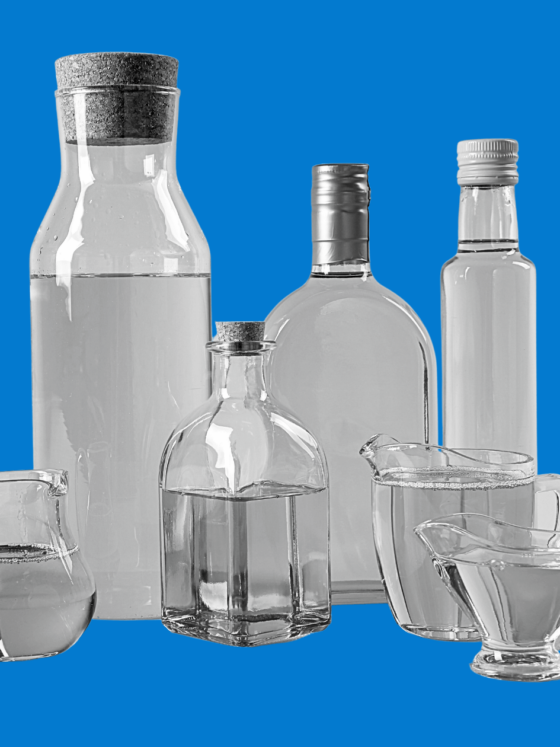The Pesticide Paradox Part 2: Your Action Plan for Reducing Pesticide Exposure

We get it. The first part of our pesticide deep-dive might’ve felt like a toxic gut-punch. It’s overwhelming to realize just how pervasive pesticides are – lurking in our food, water, air, and even the sanctuary of our own homes. The average American is exposed to over 3 pounds of pesticides annually, with a staggering 80% of that exposure happening indoors. But before you swear off grocery stores and build a biodome in your backyard, let’s shift that panic into power by understanding the basics and breaking down practical solutions you can implement now.
At Untoxed & Unbothered, we’re all about ditching the fear-mongering and embracing informed action. Let’s unravel the sneaky ways pesticides infiltrate our lives and arm ourselves with the knowledge to fight back.
The Perils of Pesticide Exposure: A Slow-Motion Disaster
Pesticide exposure isn’t limited to farmworkers or those living near agricultural fields. It’s an insidious threat lurking in our everyday lives. We ingest pesticide residues through contaminated food and water, inhale them from the air, and absorb them through our skin. Let’s recap the key risks associated with pesticide exposure:
- Acute Effects: Immediate and alarming effects like nausea, vomiting, and skin irritation can occur shortly after exposure.
- Chronic Effects: The long-term consequences are most concerning, potentially including cancer, neurological disorders, reproductive problems, and developmental delays.
- Endocrine Disruption: Many pesticides can disrupt the endocrine system, leading to issues like reduced fertility, early puberty, and thyroid problems.
- Carcinogenic Effects: Some pesticides are known or suspected carcinogens, and repeated exposure, even at low doses, can increase cancer risk.
Combined Effects: The “cocktail effect” of exposure to multiple pesticides is a significant concern, as the interaction between different chemicals can have unpredictable and potentially harmful consequences.
The Illusion of Safety: Greenwashing & the Pesticide Paradox
The pesticide industry has mastered the art of deception, painting a picture of safety and sustainability while quietly peddling products packed with toxins. They’ll slap a “natural” or “eco-friendly” label on anything, even if it’s chock-full of chemicals you wouldn’t want anywhere near your body. Remember Apeel, that plant-based coating hailed as a pesticide savior? Turns out it’s loaded with “forever chemicals” linked to a host of health issues. It’s a classic bait-and-switch, designed to lull you into a false sense of security while your health pays the price.
The bottom line? Keep your discerning eye activated. Big Ag and Big Chem are masters of spin, twisting the truth to protect their profits. It’s up to us, the Untoxed & Unbothered, to read between the lines, question the narrative, and demand transparency. Knowledge is power, and the more you know, the better equipped you are to fight back against the pesticide paradox.
The Untoxed & Unbothered Guide to Reducing Pesticide Exposure
Alright, enough with the doom and gloom. Here’s your Untoxed & Unbothered guide to kicking pesticides to the curb and reclaiming your health:
1. Food: Your Fork is Your Weapon
Choose Organic: Prioritize organic produce, especially for the “Dirty Dozen” – those pesticide-laden fruits and veggies most likely to harbor residues.
DIY Produce Wash: Skip the store-bought veggie washes and make your own with this simple recipe:
Mix 1 cup of water, 1 cup of white vinegar, and 1 tablespoon of baking soda.
Soak your produce for 15-20 minutes, then rinse thoroughly.
Peel & Trim: Peeling or trimming produce can remove some pesticide residues, but you’ll also lose some nutrients. So, prioritize organic whenever possible.
Grow Your Own: Get your hands dirty and grow some of your own food. Even a small herb garden or a windowsill tomato plant can make a difference.
Support Local & Sustainable Agriculture: Shop at farmers’ markets and join CSAs to support sustainable farming practices and connect with farmers who prioritize pesticide-free produce.
Read Labels Like a Boss: Become a label-reading ninja. Avoid processed foods with artificial colors, flavors, and preservatives, which may be derived from pesticide-treated crops.
Meat & Dairy Matters: Choose organic or grass-fed meat and dairy products whenever possible to minimize exposure to pesticides used in animal feed.
Embrace the “Clean Fifteen”: When organic options are limited, prioritize produce from the “Clean Fifteen” list, which typically has lower pesticide residues. This includes avocados, sweet corn, pineapple, onions, papaya, and more.
2. Home & Garden: Create a Sanctuary, Not a Chemical Soup
Bug Off, Naturally: Ditch the toxic bug spray and embrace natural pest control methods. Diatomaceous earth, neem oil, essential oil-based sprays, and even DIY traps (like apple cider vinegar and dish soap for fruit flies) can be effective alternatives.
DIY Cleaning Power: Wave goodbye to harsh chemicals and embrace the power of DIY cleaning products. Vinegar, baking soda, and essential oils are your new best friends.
Minimize Outdoor Pesticide Use: If you must use pesticides in your yard, choose less toxic options and apply them sparingly. Avoid spraying on windy days or near waterways.
Purify Your Air: Invest in an air purifier with a HEPA filter to remove airborne pesticides and other pollutants.
Choose Natural Materials: When buying new furniture or home goods, opt for natural materials like wood, wool, and cotton. They’re less likely to off-gas harmful chemicals than synthetic materials.
Ventilate Regularly: Open windows and doors whenever possible to let fresh air circulate and reduce the buildup of indoor pollutants.
3. Water: Filter Out the Funk
Filter It Out: A high-quality water filter is your best defense against pesticides and other contaminants in your drinking water. Look for certifications like NSF/ANSI 53 and 58.
Get It Tested: If you’re concerned about your water quality, have it tested by a certified laboratory. This will give you a clear picture of what contaminants are present and help you choose the right filtration system.
Additional Tips for Minimizing Pesticide Exposure
Mindful Landscaping: Opt for low-maintenance, native plants that attract beneficial insects and require fewer pesticides.
Pet Care: Protect your furry friends with natural flea and tick prevention products, and avoid using pesticides on lawns or gardens where they play.
Secondhand Smarts: Always wash secondhand clothing thoroughly before wearing it to remove any lingering pesticide residues.
Indoor Air Quality Matters: Improve your indoor air by regularly cleaning and vacuuming, using natural air fresheners, and avoiding synthetic fragrances and aerosols.
Educate Yourself: Stay informed about pesticide research and regulations. The more you know, the better equipped you’ll be to make informed choices.
Home Renovations: Be mindful of pesticide exposure during home renovations or repairs. Choose low-VOC paints, sealants, and adhesives, and ensure proper ventilation during and after application.
Mind Your Shoes: Pesticides can be tracked into your home on shoes. Leave your shoes at the door to avoid contaminating your indoor environment.
Support Organic Farming: By choosing organic products, you’re supporting farmers who prioritize sustainable and pesticide-free practices.
Let’s Turn These Toxic Lemons into Sweet Lemonade
The pesticide problem is a daunting one, but we’re not here to scare you into a bunker or shame you for eating non-organic (in fact, we deplore anything that resembles guilt tripping or wellness one-upmanship). The reason we’re talking about this is because you deserve to know what’s really going on, especially when the “powers that be” would rather keep you in the dark. Understanding the ugly truth is the first step to reclaiming your ability to make informed choices.
Remember our motto: “Better, not perfect.”
We’ll say it one more time: You don’t have to abandon modern life and become a homesteading hermit to reduce pesticide exposure (though, the thought can be tempting). The Untoxed & Unbothered life is about implementing realistic solutions and everyday tweaks that align with your goals and priorities, even if it means starting small. Because trust us, every little bit counts.
If you made it this far, you’ve already got the momentum in motion. Curious to learn more about the mechanics and historical context of pesticides? Check out Part 1, “The Pesticide Paradox: America’s Toxic Secret.”
Bookmark This: Your Pesticide-Fighting Toolkit
We’ve rounded up the ultimate Untoxed & Unbothered approved resources to help you navigate this toxic world and reclaim your health:
Organizations & Resources
Environmental Working Group (EWG): Your one-stop shop for research and resources on environmental health issues, including pesticides.
EWG’s Shopper’s Guide to Pesticides in Produce: This annual guide is your secret weapon for navigating the produce aisle and making informed choices.
EWG’s Food Scores Database: Decode packaged food labels and find options with lower pesticide residues and harmful additives.
EWG’s Skin Deep® Cosmetics Database: Research your beauty products and find safer alternatives without pesticides or other harmful chemicals.
EWG’s Tap Water Database: Find out what’s really lurking in your local water supply.
Beyond Pesticides: Your go-to resource for information on pesticide-free alternatives and sustainable pest management practices.
National Pesticide Information Center (NPIC): Get science-backed answers to all your pesticide-related questions.
Center for Food Safety: This non-profit fights for sustainable agriculture and against harmful food production technologies.
Organic Consumers Association: This grassroots organization is all about advocating for organic and sustainable food and farming practices.
Pesticide Action Network (PAN): Get the lowdown on pesticides, their uses, and their health effects with PAN’s comprehensive database.
The Detox Project: This organization is on a mission to expose glyphosate, a common herbicide linked to a host of health concerns.
EPA’s Pesticide Product Label System: Decode those confusing pesticide labels and understand the active ingredients and safety precautions.
Local Farmers’ Markets & CSAs: Connect with your local food heroes and support sustainable farming practices. Find one near you with The Ecology Center’s Farmer’s Market Finder.
Regenerative Agriculture Brands: Support companies that are doing agriculture right, reducing pesticide reliance while improving soil health.
Apps & Tools
Yuka & Think Dirty: Scan product barcodes and get the dirt on potentially harmful ingredients.
Detox Me App: Track your exposure to environmental toxins and get personalized tips for reducing your risk.
Home Pesticide Testing Kits: If you’re worried about pesticide levels in your home, these kits can provide some much-needed clarity.
Books
Silent Spring by Rachel Carson: This groundbreaking book exposed the dangers of pesticides and sparked the modern environmental movement.
The Omnivore’s Dilemma by Michael Pollan: A deep dive into the complexities of our food system and the impact of industrial agriculture.
Our Daily Poison: From Pesticides to Packaging, How Chemicals Have Contaminated the Food Chain and Are Making Us Sick: A chilling exposé on the health risks of pesticides and other chemicals in our food supply.
Unnatural Selection: Investigates the use of genetically modified crops and associated pesticides, discussing the environmental and health impacts of industrial agriculture.
Whitewash: The Story of a Weed Killer, Cancer, and the Corruption of Science: Exposes the potential health risks and controversies surrounding glyphosate, the active ingredient in Roundup herbicide.
Documentaries
Living Downstream:
Based on the book “Silent Spring,” this documentary explores the links between environmental toxins, including pesticides, and cancer.
Stink!: Follow a mother’s quest to uncover the truth about the toxic chemicals used in everyday products.
Food, Inc.: An eye-opening look at the dark side of our food industry and the power of corporate control.
Circle of Poison: Examines the global trade in pesticides, focusing on chemicals banned in the US but still exported to other countries.
The World According to Monsanto: Exposes the practices of Monsanto, a major producer of pesticides and genetically modified seeds, highlighting concerns about its influence on agriculture and the potential health risks of its products.







